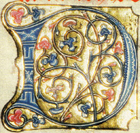
England
Bro-Saoz
Bro-Gumbria
Cumberland
| Noms de lieux | Noms de personnes |

England Bro-Saoz |
blason ou logo en attente |
Bro-Gumbria Cumberland |
 rumburgh rumburgh |
Concavata
| page ouverte en 2004 | forum de
discussion
* forum du site Marikavel : Academia Celtica |
dernière mise à jour 06/04/2009 13:39:37 |
![]()
|
Définition : ville d'Angleterre; comté de Cumberland, à l'embouchure de la rivière Eden. Ancienne forteresse romaine du Mur d'Hadrien, à l'extrémité ouest, dans la presqu'île formée par la courbe de l'embouchure de la rivière Ituna / Eden. Mise en rapport avec celui de Camboglanna, autre forteresse du centre du Mur d'Hadrien, il s'avère que ces deux lieux précis répondent aux identifications des lieux donnés dans la légende arthurienne : CAMLANN et AVALON. |
|
![]()
|
Extrait de la carte Map of Roman Britain, de Ordnance Survey |
![]()
|
Extrait de la carte Hadrian's Wall, de Ordnance Survey Le double trait traversant Concavata représente le tracé du Mur. De chaque coté, les MC = Milecastles, et le T = tour de guet |
![]()
|
Histoire : |
![]()
|
Étymologie : A. CONCAVATA * Rivet & Smith, p. 315 : SOURCE. - ND XL48 : Tribunus cohortis secundae Lingonum, CONGAVATA DERIVATION. The name is properly Concavata, Latin for (presumably) 'hollowed out, scooped out', an adjective whose unexpressed noun we cannot guess; applied to the shape of a coastline or to some other natural feature. That the name is Latin — wholly exceptional among the forts which make up the défensive System in this region — may show that the fort was built in exceptional circumstances. In the source,g for c is a commonly recorded miscopying. IDENTIFICATION. The Roman fort at Drumburgh, Cumberland (NY 2659). Note1. M. W. C. Hassall in Aspects of the ND (Oxford, 1976), note 49 to p. 113, suggests that ' In uncials Congavata, minus the first a, would look suspiciously like the Torquata title of the ala Petriana (cf. ILS 2778 and RIB 957) '. Against this, it should be noted that the ala Petriana at XL45 does not immediately precede the present name at XL48, so it is hard to see how a copying error could have arisen. Moreover, the ND entry would have had the regiment's name in the genitive (*Praefectus alae Petrianae torquatae), as in RIB 957, which gives an extra letter to be explained away in any miscopying. For these reasons the suggestion of Hassall, though ingenious, is probably not right. Note 2. Archaeologically Drumburgh is the least well known fort on Hadrian's Wall. The existence of an earth fort attached to the Turf Wall seems to be established, but neither its earlier garrison nor the date at which it was rebuilt in stone is known. The hypothesis that a fort was included here in the original scheme but was then found to be superfluous until the changed conditions of the fourth century would explain both the absence of inscriptions (for the building stones RIB
2051-53 may, as is there noted, have come from the Wall itself rather than the fort) and the omission of
Concavata from the Rudge Cup, the Amiens patera and the Ravenna
Cosmography. ***** B. DRUMBURGH. * Eilert Ekwall : "Drumbogh 1170-5 (1332) CWNS iii, a 1240 Holme C, 1390 FF. Firts element Welsh drum 'ridge'. The second may be the welsh word for 'small' found in ALLT BOUGH (see ALT). Or it might be the OE burh with loss of r owing to dissimulation. Drumburgh is not far from BURGH LE SANDS. If so, 'ridge near Burg'.
|
![]()
|
Blason : |
|
![]()
|
Sources : * Eilert Ekwall : The concise Oxford Dictionary of English Place-Names. 4è édition. Clarendon Press. 1936-1980. * A.L.F Rivet & Colin Smith : The place-names of Roman Britain. Batsford Ltd. London.1979-1982. * A.D Mills : Oxford Dictionary of British Places names. Oxford University Press. 1991-2003. |
![]()
|
Liens électroniques des sites Internet traitant de Drumburgh / Concavata : * lien communal officiel : * forum du site Marikavel : Academia-celtica hast buan, ma mignonig go fast, my little friend |
![]()